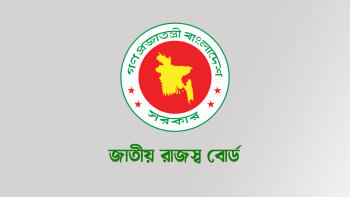Sri Lanka immensely benefitted from Bangladesh’s support

Sri Lanka has immensely benefited from Saarc countries, particularly Bangladesh and India, from a macroeconomic perspective in recent times, the central bank governor of the Island nation said today.
P Nandalal Weerasinghe made the remark while addressing the inaugural session of the 14th South Asia Economic Summit, a two-day event, hosted by the Centre for Policy Dialogue (CPD) at Sheraton Dhaka.
"The assistance that was extended in the wake of the crisis provided immense relief in the midst of the socioeconomic quagmire that Sri Lanka was in," he said.
"This type of financial cooperation among us can not only be a short-term buffer, but it can also be of a more long-term nature in the form of investment flows towards infrastructure gaps and even building of overall productive capacities."
In September, Sri Lanka paid $50 million to Bangladesh, the final installment of a $200 million loan taken under a currency swap agreement two years ago.
Sri Lanka paid back its loan as its embattled economy is staging a recovery from its worst economic crisis just a year ago.
Weerasinghe said, "The global economy has faced several challenges in recent years. While COVID-19 took a substantial socioeconomic toll on the global economy as it emerged and spread, it also created several new vulnerabilities in economies while also exposing several deep-rooted issues, as we have seen from the experience of the Sri Lankan economy."
With the rapid deployment of vaccines and economies adjusting to the 'new normal' of COVID-19, the global economy has seen a new turn of events caused by emergences of geopolitical tensions that are having sustained impact on commodity prices and with the possibility of negative impacts on commodity availability, he said.
On account of these developments, although global output growth is expected to continue slowing down, the South Asian region is expected to display some resilience especially on account of exports and continued flow of remittances, he added.
"However, in all South Asian economies, projected growth may be teetering around the average seen prior to the pandemic, without reaching the same. This is primarily due to the unwinding of the expansive monetary and fiscal loosening that was needed in the wake of the pandemic."
"The aspect that I want to draw your attention to, ladies and gentlemen, is that contrary to our optimism as individual economies, as a region, we need to be wary of this modest growth pace as all of us are striving to take our economies to the 'high -income' category within the next few decades, i.e. at least within a generation," Weerasinghe said.
Hence, there is an urgent need to rethink areas of synergies and find means and ways of converging and reaching consensuses so that as policymakers and policy practitioners we can pave the way for prosperous economies and societies, he said.
Amid the global economic slowdown, the Saarc bloc will need to go back to the drawing board and rapidly work out effective yet pragmatic strategies that can help our vulnerable region to weather this storm, Weerasinghe said.
Regionalism will be essential to sustain South Asia's dynamism. South Asia is a subregion that is yet to fully exploit its intra-regional potential, he said.
He said intraregional trade among Saarc nations is crucial for promoting economic growth and reducing poverty in the region.
However, trade within Saarc has historically been limited due to various factors, including political tensions, restrictive tariffs and duties, import restraints, protracted customs requirements, and excessive documentation, Weerasinghe said.
The Lankan central bank governor said Sri Lanka's exports to the Saarc region accounted for nearly 10 per cent of total Sri Lankan exports while import expenditure accounted for nearly 29 per cent of total expenditure due to significantly high imports (about 89 per cent in 2022) from India.
Intra-regional trade among Saarc countries was about $40 billion (in each direction) in 2022, which has seen a steady growth over the years compared to $6 billion in 2003, he said.
"Imports among Saarc countries were about 4 percent of the total imports from the world by Saarc countries while exports among Saarc countries were about 7 percent of the total exports to the world by SAARC countries, which indicates that despite steady growth in regional trade it is still limited compared to total trade of the region."
Several other agreements such as the Bay of Bengal Initiative for Multi-Sectoral Technical and Economic Cooperation (BIMSTEC), Indian Ocean Rim Association (IORA) are in operation to improve regional economic partnership while the SAARC Agreement on Trade in Service (SATIS) is being negotiated to cover trade in services sector in the region, he said.
Weerasinghe said another welcome initiative has been the recent scheme by India to trade in Indian rupees.
"This is expected to create more avenues for trade and trade integration within the region by reducing the exposure on US dollar and other reserve currencies. It may also be appropriate to assess the possibility to expand such initiatives to the South Asia region as a whole, to expand trade settlement by South Asian countries in local currencies."
"I believe a collaborative study in this regard is to be initiated shortly as part of research collaboration under SAARCFinance and I sincerely hope that there will be some positive and material findings that can help pave the way for such integration."
He said: "Amid initiatives to enter into new trade agreements, I believe the prudent way forward is to partake in the 'global village' by identifying means of integration with global/regional value chains and diversification of exported goods, while broadening the export market in general."
Nevertheless, rather than relying too much on duty concessions, export promotion policies need to focus on exporting improved quality goods with high value addition at lower costs of production, achieved through research and development led innovation, over the medium to long term, Weerasinghe said.
He further said, "With the growing traction for a 'global village,' the time is opportune for us to consider means in which we can improve cross-border connectivity while also ensuring our sovereignty and security."
Although several strides have been made in relation to transport infrastructure and services within individual member nations, cross-border transport facilitation is almost non-existent, he added.
Weerasinghe said another area of cooperation that can immensely benefit all nations is in relation to the energy sector.
"While the SAARC region had been grappling with energy constraints on account of insufficient energy resource endowments, bottlenecks in domestic energy infrastructure and lack of investment mobilization in the energy sector, the region is now presented with new challenges in light of the need to transition away from fossil fuels, in line with the Sustainable Development Goals Agenda of 2030."
He said in the last decade, this subregion has made significant progress in the information and communication technology (ICT) sector, positioning itself as a major production hub and a highly sought after exporter of IT and IT-enabled services. COVID-19, of course, helped catalyze a significant portion of the recent transformation, he added.
Weerasinghe said South Asia is a hotspot for natural calamities, and therefore its population of 2 billion people is becoming increasingly vulnerable to the impacts of climate change, food insecurity, and infrastructure devastation.
Given such common risks and vulnerabilities across the region, collaboration in this regard is the only means of ensuring sustainable growth amid these natural shocks, Weerasinghe said.
He said there is a collective need to improve agricultural productivity through sustainable agriculture practices.
Greater regional cooperation can help minimize food price volatility and focus production systems to fill the lacuna that lies in demand and supply, he added.

 For all latest news, follow The Daily Star's Google News channel.
For all latest news, follow The Daily Star's Google News channel. 








Comments